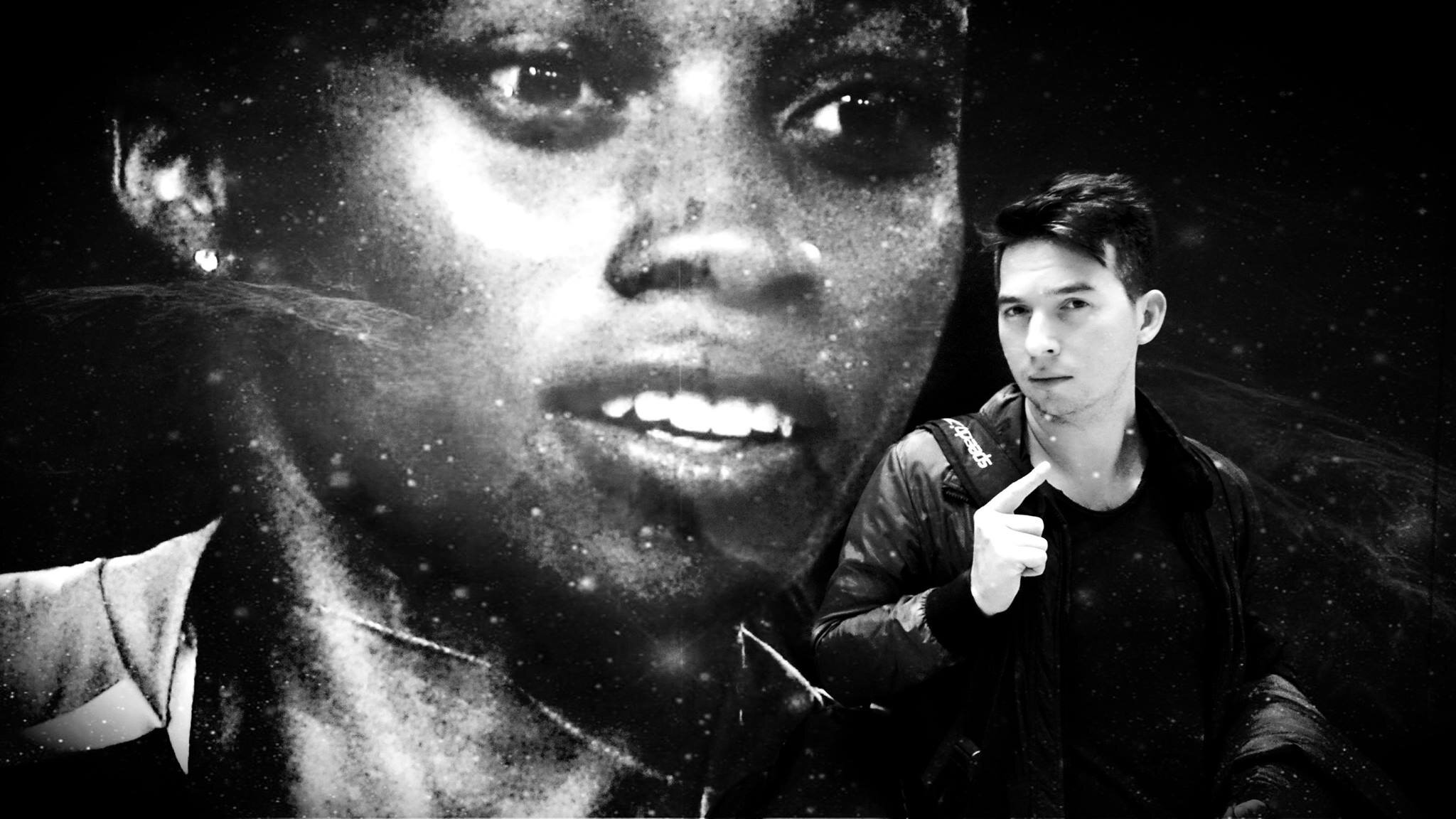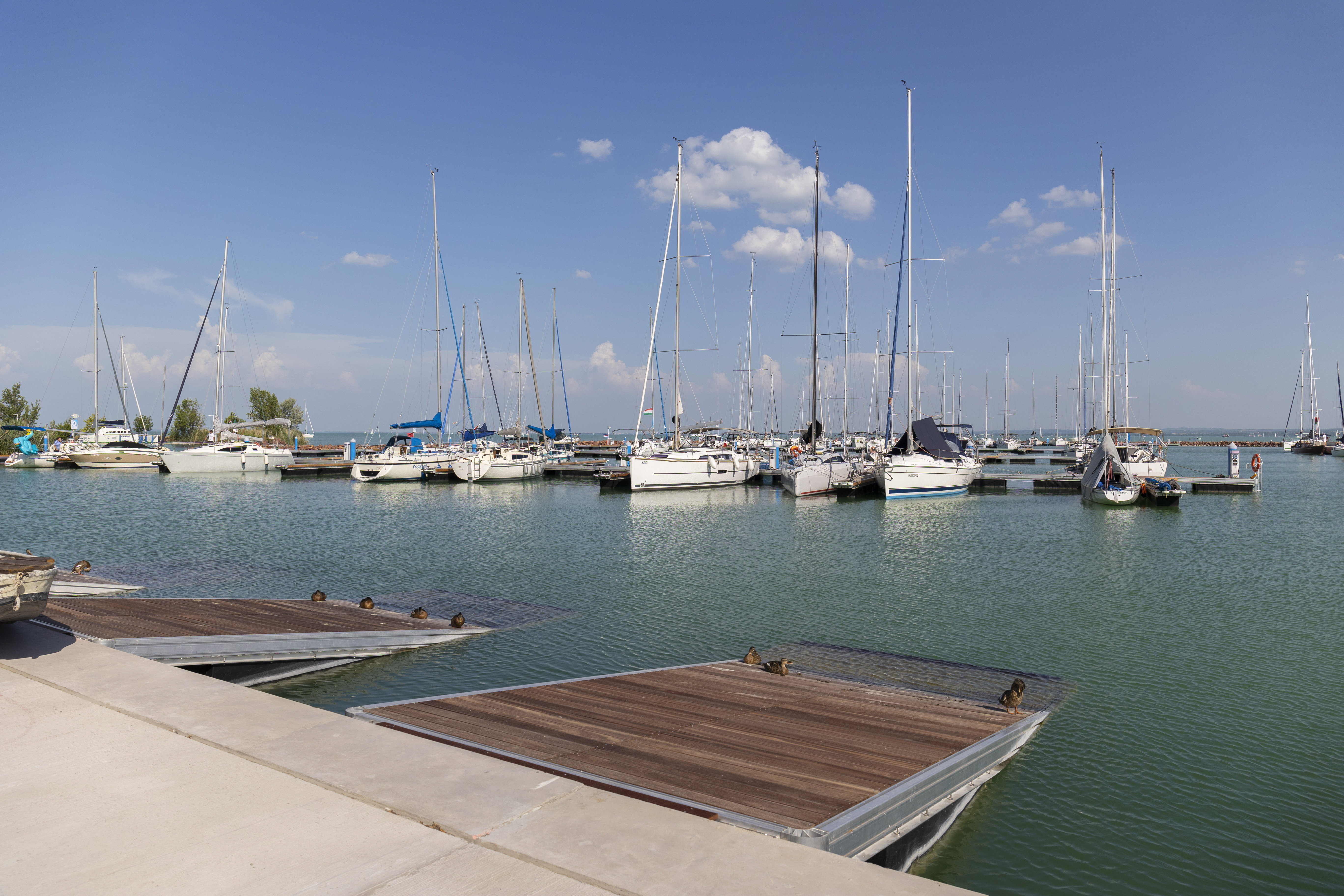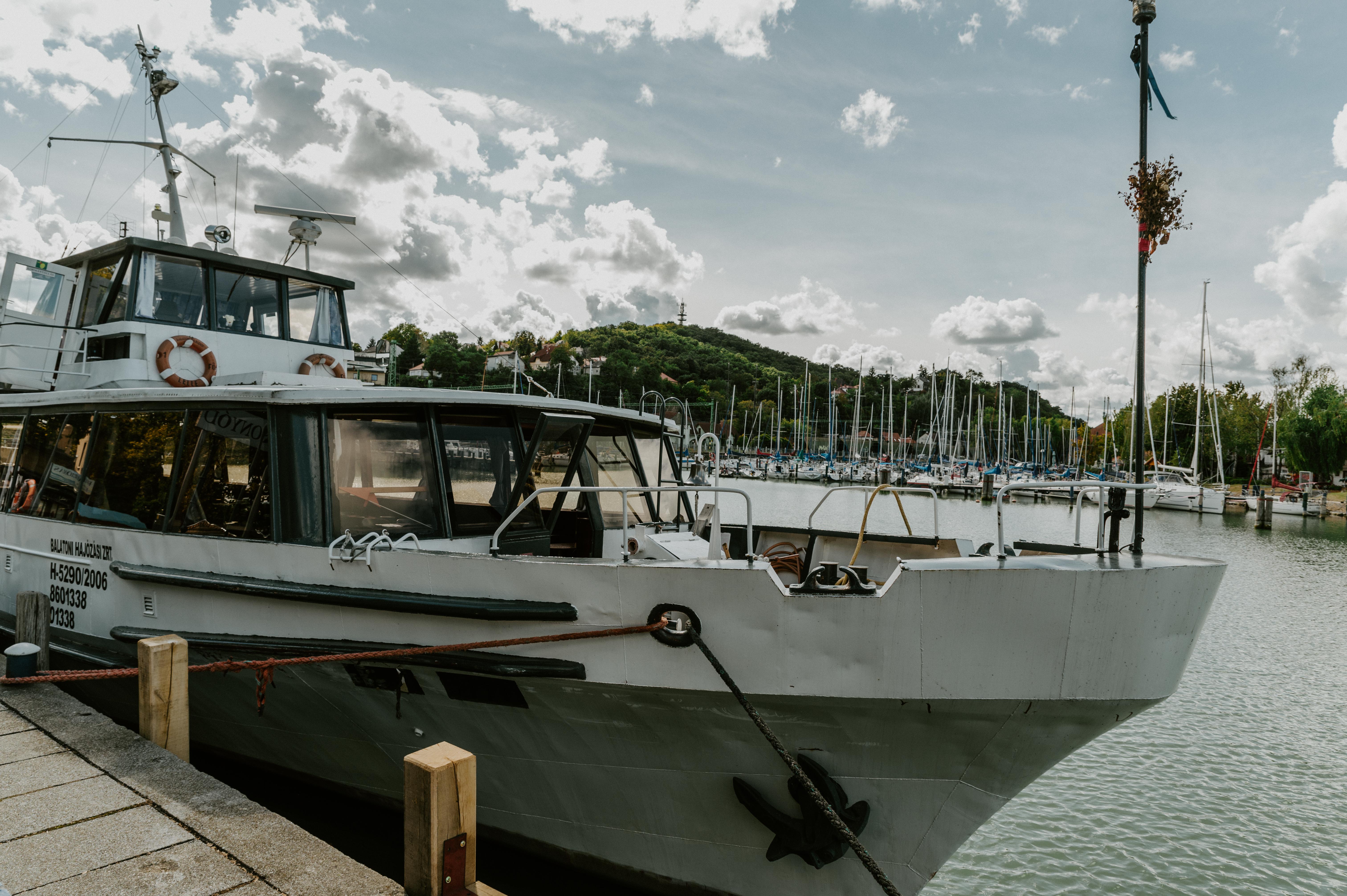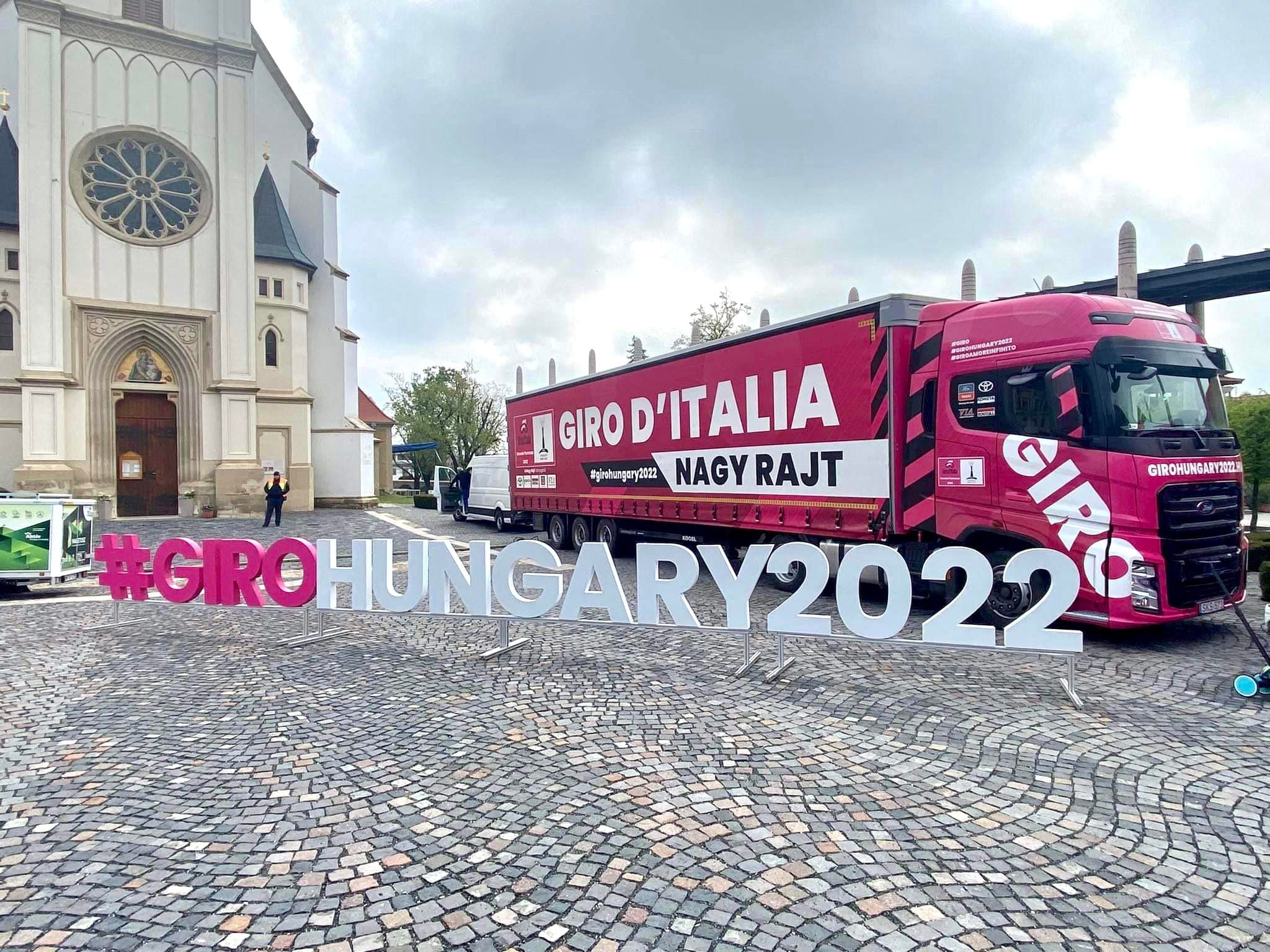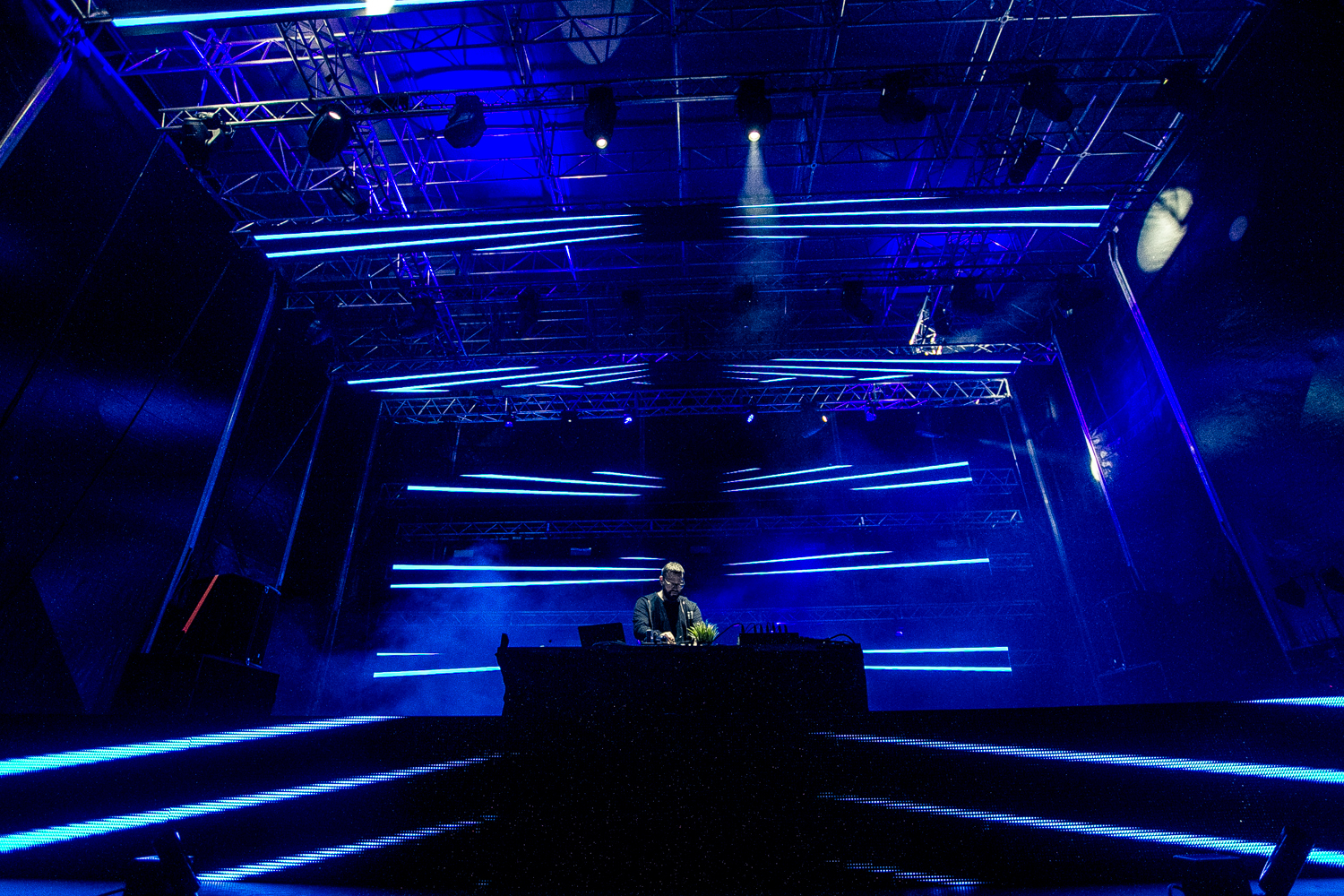We Love Balaton: Which one came first, your love for Balaton or your interest in art?
Andrej Tóth: My love for art was instilled in me by my mother at a very early age, but I didn’t have an easy time growing to love Balaton. Unrequited Balaton love stories in my teenage years, hydrophobia, all this on the south shore. Everything has changed since then, I don’t chase love stories anymore because I have three ladies in my life, who make me very happy. All I need now is a shady spot where I can drink my bubbly fröccs. I have already mastered getting around in the muddy, sunscreen infused water, and I've relocated to the north shore.
WLB: Which are your favourite places around Balaton?
AT: Almádi is the headquarters, with Grandpa’s vineyard that needs harvesting, the always captivating pair of the Füred allée and the Jókai Villa, the Bergmann Confectionery with its mimosa cake, the Tihany PIAC Marketplace.
WLB: “Every summer is retro, every time is past” – says the Art Hekk website. Is it possible to talk about Balaton without any sort of nostalgia?
AT: No, it isn’t. Everyone has and will have their nostalgic personal moments, that particular Balaton Summer. ART HEKK is based on my experiences, whereas my girls are only in the process of building up their own little worlds where there’s a place both for cheese and sour cream lángos and sparkly tattoos.
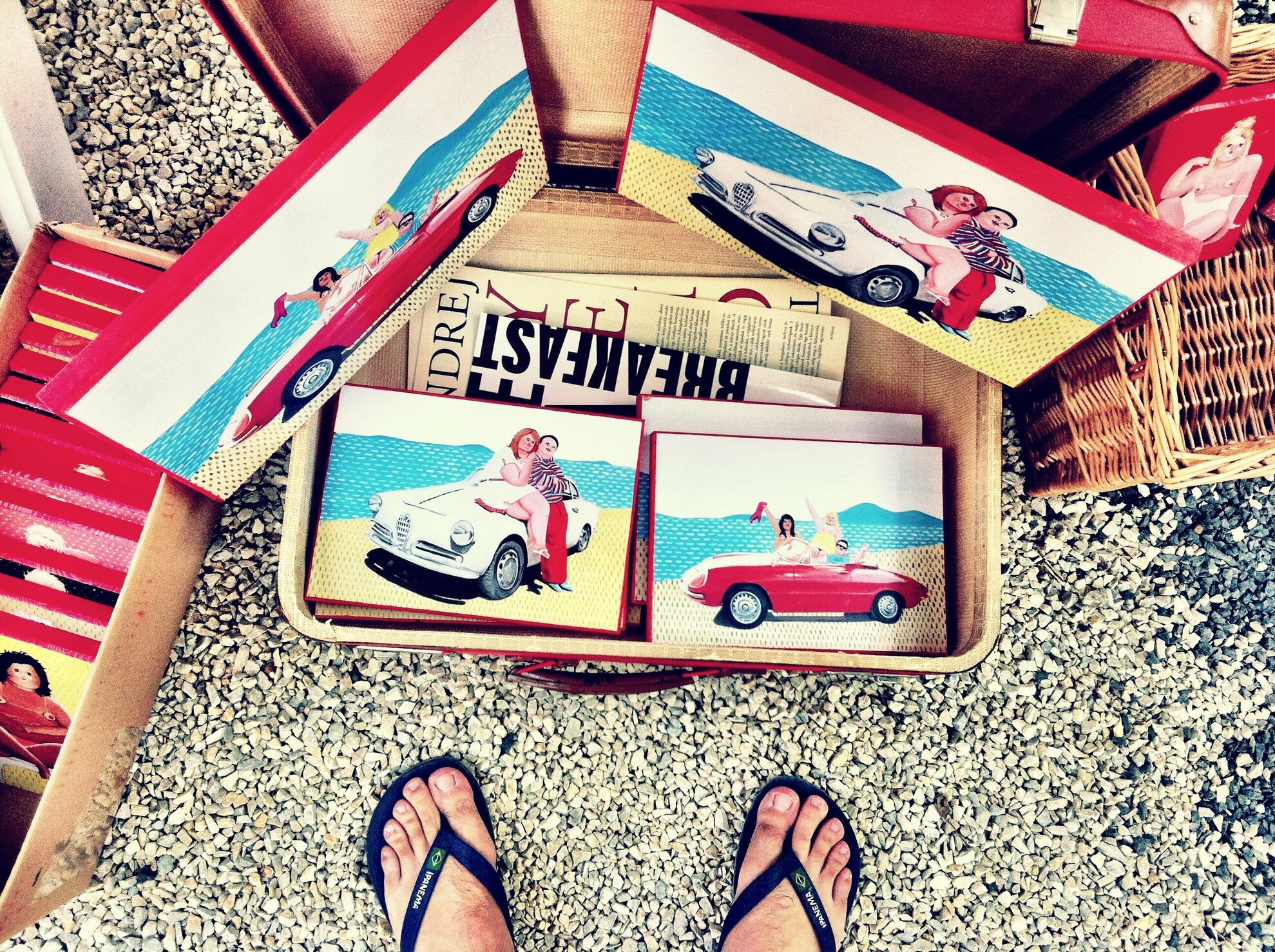
WLB: When did you found ART HEKK, and what was your aim?
AT: ART HEKK is a new, separate brand of handmade products inspired by the world of Balaton. The concept itself came to me in the summer of 2013: I was sitting at a shady table on Balatonalmádi’s Wesselényi Beach with a cup of coffee and a glass of bubbly fröccs, and the bold thoughts started flowing.
It was created for two reasons. One, whenever I had the chance to showcase my works at an exhibition, a lot of people came up to me, telling me they wanted to hang a particular piece on their wall at home, but I never accommodated such requests for various reasons. My goal is to separate the two worlds, the world of galleries and the world of creative products sold in small quantities, but in a way that they are still able to support each other and give each other freedom. The other reason is very simple: inexplicably, our beloved Balaton doesn’t have its own, current creative medium, its own brand. The market is totally empty. There are promising signs, markets selling design products (Tihany PIAC Marketplace), lots of initiatives and reinterpretations – that’s why I’m trying to be among the first.
In the beginning we made pictures painted on wooden boards, custom-made, carved and painted wooden HEKKs, postcards, but by now the range of products has expanded: trendy tops with fish on them, tote bags made from recycled banners (created with the Medence Csoport), and our fun collection of sticker tattoos will also come out soon in cooperation with Tatz.
During the summer season, we can be found regularly at our favourite market, Tihany PIAC Marketplace, we attend the festival in Kapolcs, the Etyek Picnics, and even the WAMP fairs. Our network of resellers is constantly growing as well, and we’re already setting our sight on the Adriatic, specifically Zadar.
WLB: You’re not only a painter, you are a graphic artist too. Did one field come from the other? In what way is designing a concert poster different from painting?
AT: You can use both platforms to convey personal messages and points of view. The main difference is that you appear as an applied artist in the first case: you have to meet expectations and deadlines. With the latter, you expose a personal album to the public without taboos, consuming lots and lots of red wine in the process, and after it’s out, you can let it go and drink champagne.
WLB: As the official graphic artist of A38, you’ve won the Cultural Poster of the Year award three times. Which poster artist or movement influences you the most?
AT: Russian avant-garde, Soviet propaganda posters, El Lissitzky and the like. But like many other things, this is also thanks to the Ship: 12 years ago I chose this style and used it to shape the image of A38.
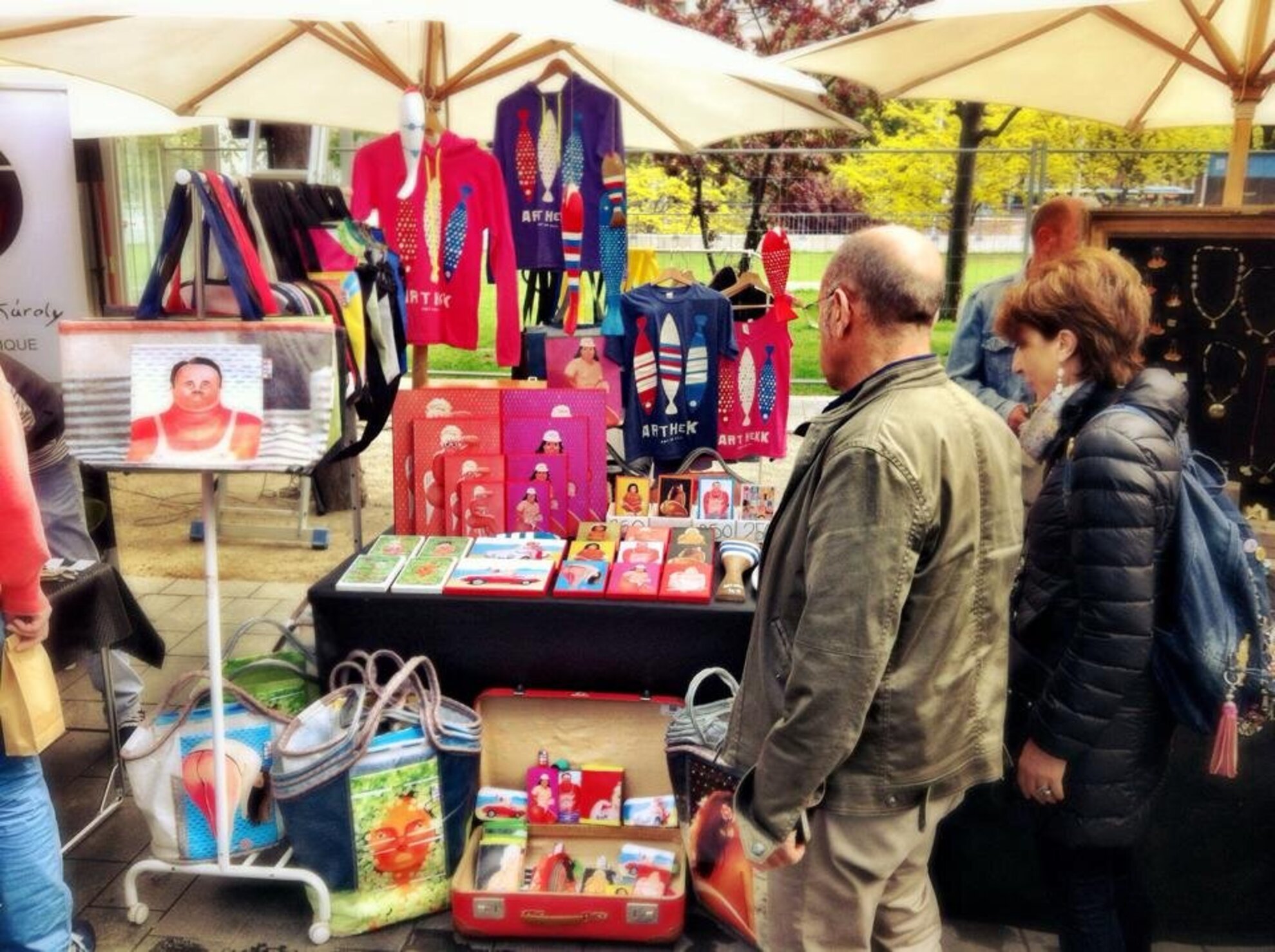
WLB: In 2009 you had an exhibition called Dolce Vita Bed&Breakfast, which was inspired by Sicily, but the figures, the visual elements were very similar. Is that because of you, or are beaches similar everywhere?
AT: Not only is the sun that’s shining down on everyone the same, the bodies are equally curvaceous and sensual with all the sweat beads, and they are even watched by the same pair of eyes. So you won’t find a lot of differences on my canvases. Maybe I mix more burnt umbras on my palette.
WLB: The name of Fernando Botero comes up quite frequently in connection with your paintings. What about him captivates you so much?
AT: Ever since my university years, I’ve been attracted to these curvaceous figures. It is no secret that I became obsessed with the world of Fernando Botero back then. His point of view, his visual world, his kind irony are all really close to me. For me, these round shapes, this way of depicting bodies is a projection of my innate, unwavering optimism and love of life. Anyone who knows me knows that I base my Male and Female figures on the characteristics of myself and my wife.
WLB: The oil paintings you put on display at the Balaton-inspired exhibition Plattensee last year were painted on blockboards, raspberry crates from Nagymaros, wardrobe doors and two wooden fish, to mention but a few. Are you drawn to unique surfaces?
AT: I’ve used wooden surfaces since my Sicily-themed exhibition. A good friend of ours called Máté lives in Nagymaros, he’s a furniture restorer, an inventor, a Jack of all trades, an oddball. He always has an interesting wooden board or wardrobe door. He surprised me with the raspberry crates. I got four shallow, makeshift wooden crates, I set them up in the middle of my studio, and they were there for days. I waited for them to speak to me. Finally, it happened. I love that these different wooden surfaces communicate their own visual worlds.
